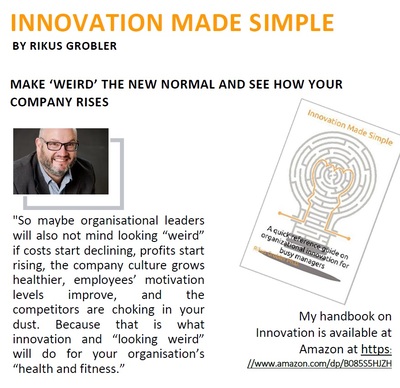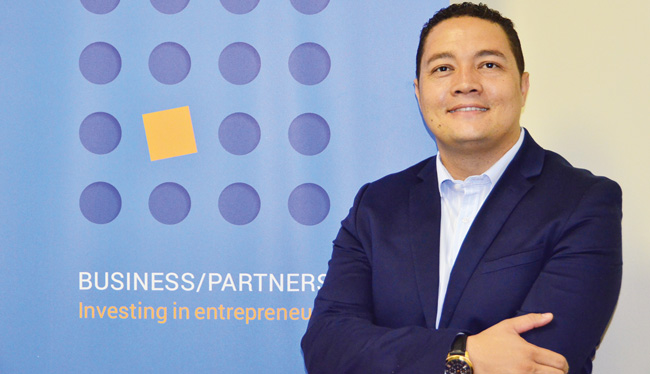
Open Innovation – what it can mean for your company

By Rikus Grobler, www.nis.co.na, [email protected].
I covered innovation execution quite extensively over the last two months, and the next topic I want to cover is innovation methodologies.
There are many different ways organisations can innovate, and each of the many methods has its strengths and weaknesses. The specific methodology (or methodologies) organisations apply depends on many factors. Therefore, I believe that a discussion of the prominent innovation methodologies will add value for the readers when they have to make decisions about which innovation methodology will suit their organisations and circumstances best.
Open Innovation
I want to kick off the review of innovation methodologies with Open Innovation (OI) mainly because I am of the opinion that organisations are gradually moving away from traditional work models; they are becoming a lot bolder and more inclusive in their approaches to innovation.
The term Open Innovation was popularised by Henry Chesbrough in his book Open Innovation: The New Imperative for Creating and Profiting from Technology. He provides the following succinct definition: “Open Innovation means that valuable ideas can come from inside or outside the company and can go to market from inside or outside the company as well.” Closed innovation, by contrast, is ‘closed’ to outside-of-company involvement. Chesbrough describes the implications of a closed innovation approach: “Companies generate their own ideas and then develop them, build them, market them, distribute them, service them, finance them, and support them on their own.”
Where did OI come from? OI has existed in certain industries and domains for a long time. Chesbrough cites the Hollywood film industry, which: “has innovated for decades through a network of partnerships and alliances between production studios, directors, talent agencies, actors, scriptwriters, specialized subcontractors (e.g., suppliers of special effects), and independent producers.” For decades and across industries, most large corporations have relied on external innovation partners in the advertising and marketing domains. However, in many other domains, OI principles have not been applied until recently.
A practical example of OI is from NASA, which adopted OI to build a mathematical algorithm that can determine the optimal content of medical kits for NASA’s future manned missions. In order to reach an innovative software that can solve this problem, NASA collaborated with TopCoder, Harvard Business School, and London Business School. In this collaboration, TopCoder members provided 2,833 code submissions to help NASA build the intended algorithm. The winners were offered U$24,000 in cash prizes plus having seats to watch remaining shuttle mission launches. The application of open innovation created a cost-effective and time-effective solution that could not be reached using the internal team alone.
The value of OI became apparent to me when I viewed it from the manager’s perspective and the innovator’s perspective, provided by Julian Keith Loren. From the manager’s perspective, OI means access to broader design expertise and a wider range of innovation capabilities. For the manager, OI also means that return on innovation investments is more closely linked to market demand rather than being governed by the company’s ability or inability to bring specific innovations to market.
Better return on innovation investments increases support from upper management, may lead to improved compensation and help justify future budget requests. From the Innovator’s perspective, OI means that there can be collaboration with a more diverse team and that designs and ideas can be enhanced by a wider array of viewpoints. The addition of external paths to market also means that the innovator can design products, services, systems, or models with a greater focus on consumer needs and less emphasis on the constraints dictated by internal paths to market – constraints imposed by previously unavoidable manufacturing and distribution limitations, for instance.
I firmly believe that OI is a very viable innovation methodology for a country like Namibia with limited innovation resources. We have great expertise in this country in many disciplines and industries, and OI can be the vehicle to synergize these resources to make innovation much wider available and solve pressing problems for our country.
Next Time
Next time I want to review another form of OI, namely Crowdsourcing.
I conclude with a quote from Steven Johnson: “Good ideas may not want to be free, but they do want to connect, fuse, recombine. They want to reinvent themselves by crossing conceptual borders. They want to complete each other as much as they want to compete.”
Click on the thumbnail below to order Dr Grobler’s e-book on Innovation from Amazon.












































